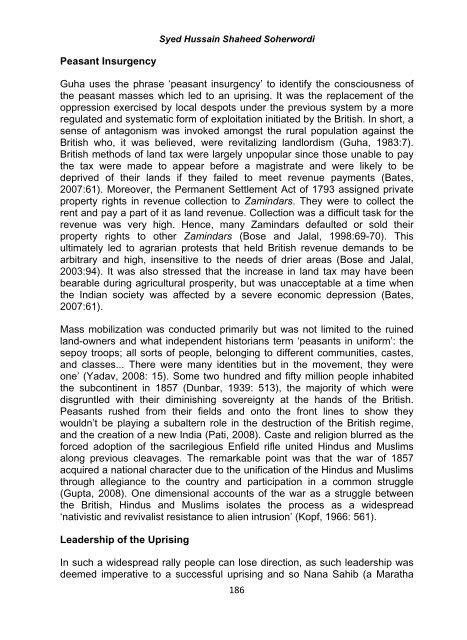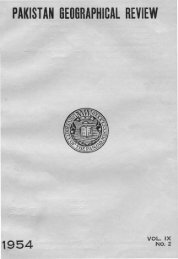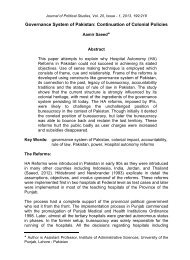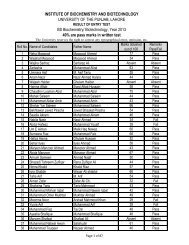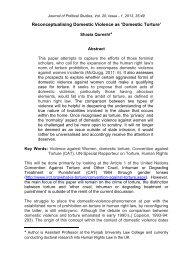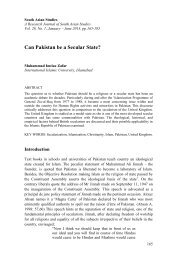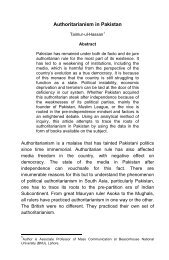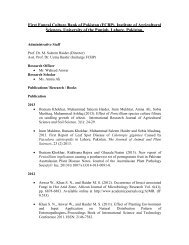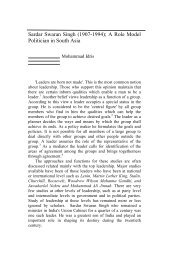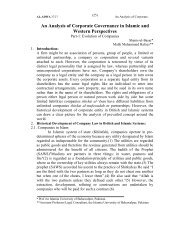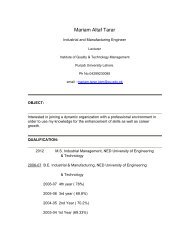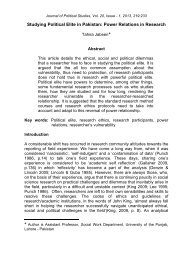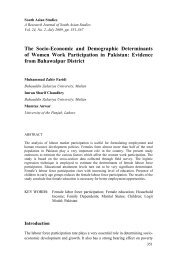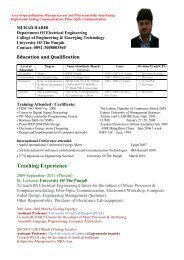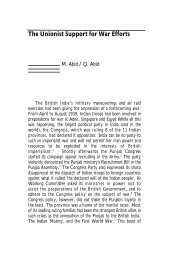The Significance of the Different Names Applied by Historians to the ...
The Significance of the Different Names Applied by Historians to the ...
The Significance of the Different Names Applied by Historians to the ...
Create successful ePaper yourself
Turn your PDF publications into a flip-book with our unique Google optimized e-Paper software.
Syed Hussain Shaheed Soherwordi<br />
Peasant Insurgency<br />
Guha uses <strong>the</strong> phrase ‘peasant insurgency’ <strong>to</strong> identify <strong>the</strong> consciousness <strong>of</strong><br />
<strong>the</strong> peasant masses which led <strong>to</strong> an uprising. It was <strong>the</strong> replacement <strong>of</strong> <strong>the</strong><br />
oppression exercised <strong>by</strong> local despots under <strong>the</strong> previous system <strong>by</strong> a more<br />
regulated and systematic form <strong>of</strong> exploitation initiated <strong>by</strong> <strong>the</strong> British. In short, a<br />
sense <strong>of</strong> antagonism was invoked amongst <strong>the</strong> rural population against <strong>the</strong><br />
British who, it was believed, were revitalizing landlordism (Guha, 1983:7).<br />
British methods <strong>of</strong> land tax were largely unpopular since those unable <strong>to</strong> pay<br />
<strong>the</strong> tax were made <strong>to</strong> appear before a magistrate and were likely <strong>to</strong> be<br />
deprived <strong>of</strong> <strong>the</strong>ir lands if <strong>the</strong>y failed <strong>to</strong> meet revenue payments (Bates,<br />
2007:61). Moreover, <strong>the</strong> Permanent Settlement Act <strong>of</strong> 1793 assigned private<br />
property rights in revenue collection <strong>to</strong> Zamindars. <strong>The</strong>y were <strong>to</strong> collect <strong>the</strong><br />
rent and pay a part <strong>of</strong> it as land revenue. Collection was a difficult task for <strong>the</strong><br />
revenue was very high. Hence, many Zamindars defaulted or sold <strong>the</strong>ir<br />
property rights <strong>to</strong> o<strong>the</strong>r Zamindars (Bose and Jalal, 1998:69-70). This<br />
ultimately led <strong>to</strong> agrarian protests that held British revenue demands <strong>to</strong> be<br />
arbitrary and high, insensitive <strong>to</strong> <strong>the</strong> needs <strong>of</strong> drier areas (Bose and Jalal,<br />
2003:94). It was also stressed that <strong>the</strong> increase in land tax may have been<br />
bearable during agricultural prosperity, but was unacceptable at a time when<br />
<strong>the</strong> Indian society was affected <strong>by</strong> a severe economic depression (Bates,<br />
2007:61).<br />
Mass mobilization was conducted primarily but was not limited <strong>to</strong> <strong>the</strong> ruined<br />
land-owners and what independent his<strong>to</strong>rians term ‘peasants in uniform’: <strong>the</strong><br />
sepoy troops; all sorts <strong>of</strong> people, belonging <strong>to</strong> different communities, castes,<br />
and classes... <strong>The</strong>re were many identities but in <strong>the</strong> movement, <strong>the</strong>y were<br />
one’ (Yadav, 2008: 15). Some two hundred and fifty million people inhabited<br />
<strong>the</strong> subcontinent in 1857 (Dunbar, 1939: 513), <strong>the</strong> majority <strong>of</strong> which were<br />
disgruntled with <strong>the</strong>ir diminishing sovereignty at <strong>the</strong> hands <strong>of</strong> <strong>the</strong> British.<br />
Peasants rushed from <strong>the</strong>ir fields and on<strong>to</strong> <strong>the</strong> front lines <strong>to</strong> show <strong>the</strong>y<br />
wouldn’t be playing a subaltern role in <strong>the</strong> destruction <strong>of</strong> <strong>the</strong> British regime,<br />
and <strong>the</strong> creation <strong>of</strong> a new India (Pati, 2008). Caste and religion blurred as <strong>the</strong><br />
forced adoption <strong>of</strong> <strong>the</strong> sacrilegious Enfield rifle united Hindus and Muslims<br />
along previous cleavages. <strong>The</strong> remarkable point was that <strong>the</strong> war <strong>of</strong> 1857<br />
acquired a national character due <strong>to</strong> <strong>the</strong> unification <strong>of</strong> <strong>the</strong> Hindus and Muslims<br />
through allegiance <strong>to</strong> <strong>the</strong> country and participation in a common struggle<br />
(Gupta, 2008). One dimensional accounts <strong>of</strong> <strong>the</strong> war as a struggle between<br />
<strong>the</strong> British, Hindus and Muslims isolates <strong>the</strong> process as a widespread<br />
‘nativistic and revivalist resistance <strong>to</strong> alien intrusion’ (Kopf, 1966: 561).<br />
Leadership <strong>of</strong> <strong>the</strong> Uprising<br />
In such a widespread rally people can lose direction, as such leadership was<br />
deemed imperative <strong>to</strong> a successful uprising and so Nana Sahib (a Maratha<br />
186


